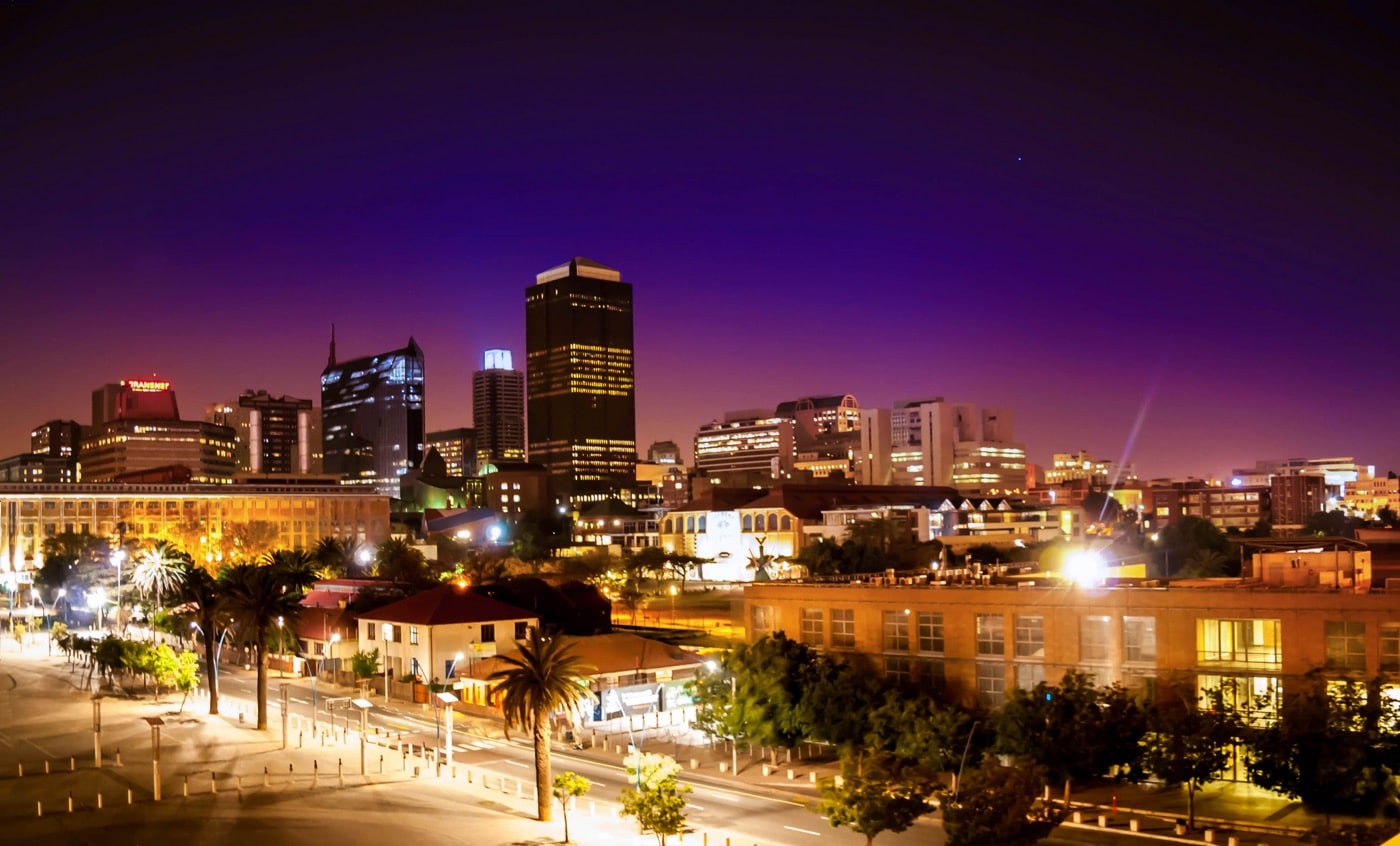Breathing in the crisp morning air, I grab my camera and begin snapping photos of the landscape – miles and miles of Rocky Highveld grassland, stream fed rivers and feeding antelope. I can smell burnt grass as local farmers make fires to help underground bulbs bloom. This probably isn’t what you’d imagine when picturing the notoriously rough city of Johannesburg but don’t be fooled; South Africa’s largest city is full of scenic experiences.

While Johannesburg has become modern and beautified in the last 10 years, it holds a dark history. From 1948 to 1994 South Africa endured apartheid, a system that segregated races and gave power to those of European descent while lowering the status of people from non-European backgrounds (i.e. blacks, Indians and people of color). After years of protests, negotiations and elections, the system was dismantled, although there was a period of disorganization and corruption where crime was rampant.
Although it’s taken Johannesburg awhile to recover, today the city is comprised of a modern society with residents themselves unable to believe apartheid occurred less than 20 years ago. Not only is interracial marriage legal, but so is gay marriage. Moreover, the country is striving to enrich its arts, culture and tourism sectors (working hard to be the world’s street art capital by 2040). Despite the fact that Johannesburg battles a higher than usual crime rate, it’s gradually lowering as the city evolves and becomes more aesthetically enhanced.
But today I’m at a scenic place that doesn’t need aesthetic enhancements, the Cradle of Humankind. Located less than an hour from Johannesburg, the attraction is home to 13 paleontological sites where a number of important ancient discoveries were made on its 180 square miles of beautiful grassland. And while it’s a prime spot for taking photos, it’s also where Darwin believed a common ancestor shared by humans with apes lived before Homo sapiens existed.
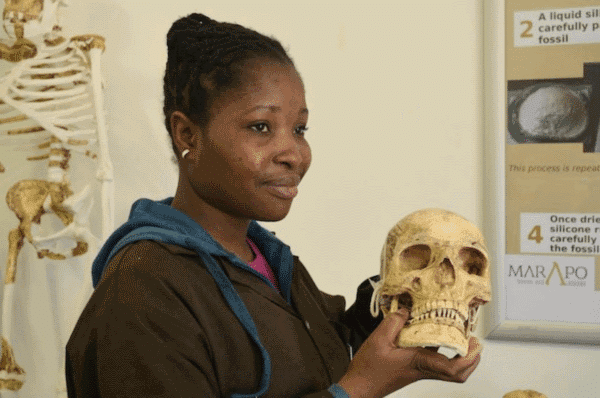
After getting some background information in the interactive Visitors Centre, officially called Maropeng, I head to the SterkfonteinCaves. Here I traverse through otherworldly looking stalactites and stalagmites — some looking like animals and others like monsters — and see where important discoveries like Mrs. Ples, a 2.3 million-year-old skull thought to be the Australopithecus Africans ancestor shared by humans, and Little Foot, a 3 million-year-old virtually complete Australopithecus skeleton, were uncovered. My guide also points out a mysterious underground lake outlined by beautiful yet bizarre twisting protrusions of rock.
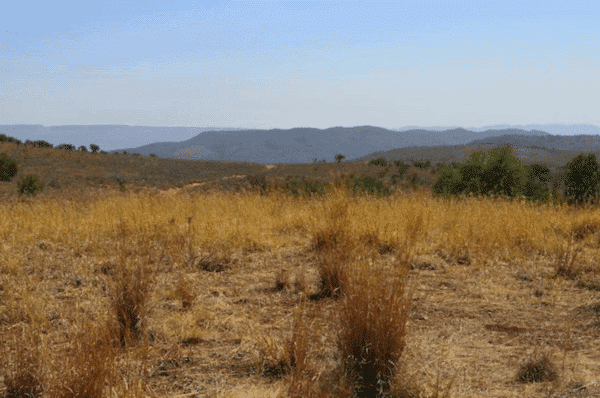
After a night spent in the 4-star Maropeng Hotel where from my balcony I delight in the southern hemisphere’s astronomical wealth, as it holds 2/3 more stars than the northern, I awake before dawn for a hot air balloon safari over the Magalies River Valley and Cradle of Humankind.
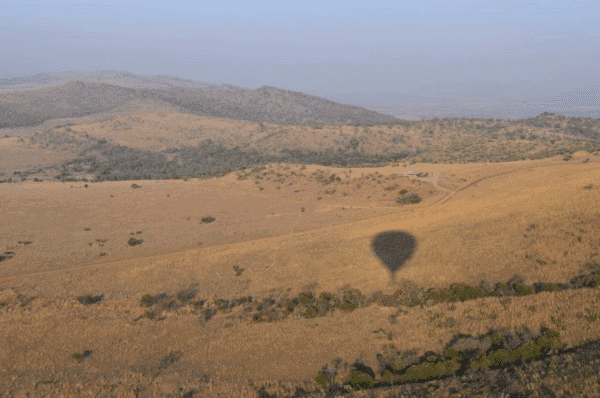
Surrounded by the namesake Magaliesberg Mountains, Magaliesburg is a small village outside of Johannesburg where time slows down and concrete skyscrapers are replaced by tree-lined peaks and herds of antelope. Bill Harrop’s “Original” Balloon Safaris allows me to take in the scenery from 16,000 feet above ground, where roaming animals become like tiny ants on the ground. While I thought I’d be nervous about the dizzying height, the breathtaking natural scenery all around keeps me too preoccupied to think of anything else. After landing outside the Sekwati Game Reserve, our group toasts with a glass of bubbly before taking in exotic animals like zebra, sable antelope and giraffe on a game drive.
Photo: Jessica FestaWhile exciting, this isn’t my first game drive as a few days prior I’d been at the Rhino & Lion Nature Reserve, situated about 40 minutes outside of Johannesburg. Because of the name, I was expecting to see rhinos and lions in some kind of fenced-in area; however, the experience was much wilder than that. Technically, the reserve is surrounded by a fence although you can’t really tell as it encompasses 3,000 acres, giving you the feeling that you’re out in the bush. Driving to the check-in office I spot giraffe, wildebeest, springbok, blesbok, elands, ostriches and two adorable pygmy hippos hydrating and playing in a pool. The highlight of this experience is the Lion and Predator Camp, where the jeep gets up close to white and brown lions and wild dogs with mangy fur and bold patterned paws. From the open air safari truck I also spy Kruger lion, buffalo, white rhino, cheetah, crocodile and emu, all part of the reserve’s 600 herd of game.
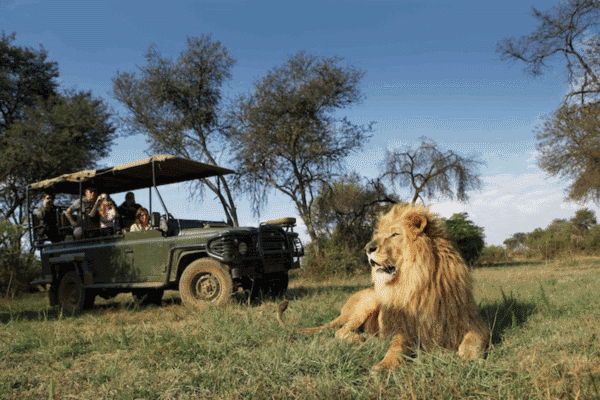
Back in the city again I’m surrounded by beauty, although with an urban spin. Not sure if it’s because it reminds me of my Brooklyn neighborhood, the hipster hood of Maboneng keeps my camera clicking. The neighborhood started in 2009 with Arts on Main, a building with a courtyard full of artisanal eats, music, boutiques, art galleries and innovative ideas. As the attraction grew in popularity and artists began taking over the abandoned warehouse spaces in the once dangerous inner city area, there was an avenue for the creative offerings to evolve. A development company grabbed hold of the project, keeping a philosophy of integration over gentrification and today owns 35 buildings and counting. Spaces have been turned into artist lofts, art hotels, galleries, experimental theaters and, most recently, Africa’s first design museum, the Museum of African Design (MOAD). Walking the streets, I spot stylish locals sipping coffees alfresco, skateboarders practicing in the almost car-free streets and graffiti artists making bold statements with color that enhances the neighborhood.
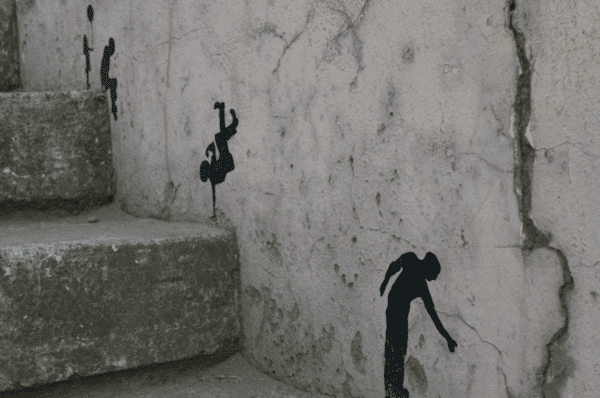
Being an art enthusiast, Newtown also steals my heart as the neighborhood is filled with beautiful graffiti works and creative public exhibits. With regard to Johannesburg’s goal of becoming the street art capital, I think Newtown is spearheading those efforts, with many of the city’s 1,000 unofficial works found in this neighborhood. Here outdoor art is everywhere with elaborate murals splattered underneath the highway and body outlines chalked into the sidewalk. For me the most impressive is found underneath the M1 Highway on Henry Nxumalo Street. Touted by locals as the city’s unofficial graffiti gallery, you’ll find works by both established and up and coming street artists. My favorite was a bold black and white mural by Falko, thought to be the father of Johannesburg’s graffiti scene, which depicted an angry man holding a goose. Exploring these scenic art-filled neighborhoods, it’s hard for me to believe that only days before I had been almost afraid to come to Johannesburg for fear of being mugged or stuck in urban sprawl.
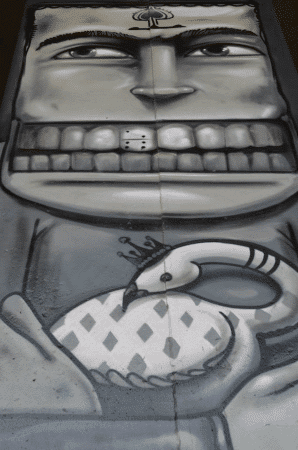
For a different kind of urban beauty, I get to explore another side of the city in upscale Sandton. This leafy suburb is where Johannesburg’s upper class lives and plays and it’s filled with modern skyscrapers, antique stores, organic food markets, tree-lined streets and upmarket shops. As I’ve been told by the locals that the shopping is unmatchable, I head straight to Mandela Square. Here I’m met by a 20 foot statue of Nelson Mandela surrounded by ambient indoor-outdoor restaurants and the spotless SandtonCity shopping center. While the attraction provides something very different from the natural beauty of the Cradle of Humankind or the art-infused Newtown, being in Sandton makes me feel like a VIP strolling the streets of the city’s most coveted zip code.
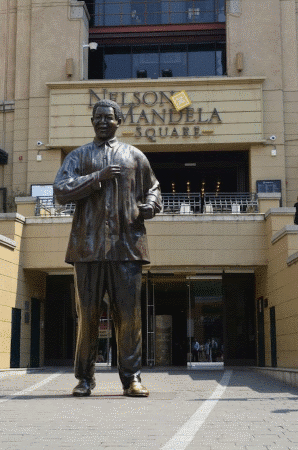
I soon learn I don’t actually need to leave the concrete jungle of Johannesburg to experience South Africa’s natural side, as the Johannesburg Botanical Garden provides an escape for times when Joburg gets too hectic (and it does!). The garden is home to 309 acres of themed gardens, with 4,500 rose bushes and 30,000 trees like oaks, redwoods and birches. A stroll through the indigenous plant garden takes me back in time to South Africa’s environmental history while three dams provide a scenic setting for boating, canoeing, kayaking and sailing.
At the Johannesburg Zoo, I immerse myself in one of South Africa’s most iconic offerings — exotic wildlife – again within the confines of the city limits. Within the zoo’s 200 acres I’m able to meet the Big Five without going on safari, as well as a number of endangered species like the white rhino, scimitar oryx, wattled crane, and black and white ruffed lemur. There are also a number of record holding animals like the capybara, the world’s largest rodent; the cheetah, the fastest land mammal on Earth; and the Andean condor, the largest predatory bird. While the zoo offers less adventure than a safari, it provides an easier access to a wide array of animals, not to mention seeing two nuzzling lions and an elephant drinking water with no thought of spilling it everywhere.
The country code for South Africa is 27 and the city code for Johannesburg is 11.
[alert type=white]
Where to Stay:
Maropeng Hotel – A 4-star hotel located in the Cradle of Humankind offering 24 comfortable rooms with views of the Witwaterberg and Magaliesberg ranges, free Wi-Fi, a restaurant and swimming pool. R400, off R563 Hekpoort road, 27 (0)14 577 9100; www.maropeng.co.za
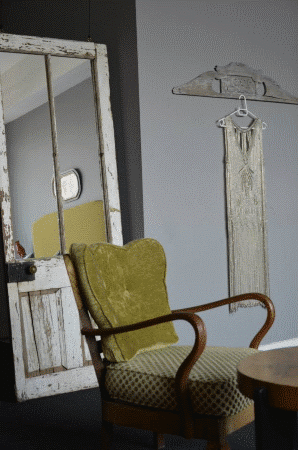
12 Decades Hotel – This art-inspired hotel features 16 unique room options designed by locals and based on a different decade of South African history. You’ll find a themed gallery on each floor of the hotel as well as a Pop Art Theatre off the lobby. 286 Fox St, 27 11 026 5601; www.12decadeshotel.co.za
Clico Boutique Hotel – Centrally located in Joburg’s city center, this 5-star hotel offers a luxury experience, personalized service and good value. Amenities include free Wi-Fi, pool, rooms with garden or pool views, a business center and fine dining restaurant. 27 Sturdee Avenue, 27 11 252 3300. www.clico-boutique-hotel.co.za
Where to Eat:
Sakhumzi Restaurant – Located in the famous Soweto Township right across from Nelson Mandela’s old home (now a museum) and Desmond Tutu’s family home, patrons can enjoy a typical township meal — buffet style. Dishes include farmers sausage, lamb, tripe, baked chicken, maize pudding, chakalaka and sweet malva pudding. 6980 Vilakazi Street, 011 536 1379; www.sakhumzi.co.za
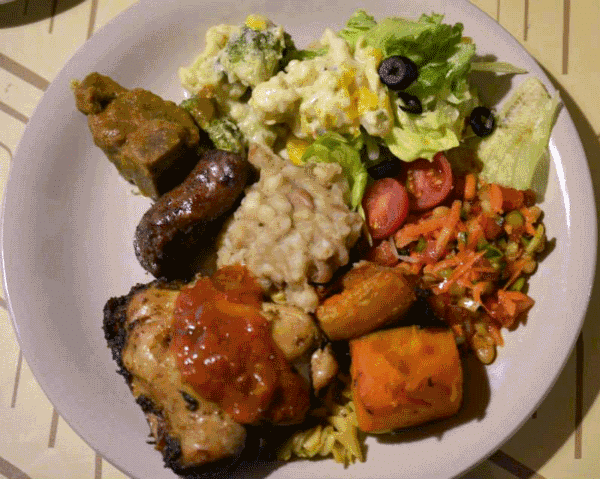
Canteen at Arts on Main – In the artsy neighborhood of Maboneng, this restaurant serves international dishes, fresh seafood and high quality meats paired with local wines and beers. Dine under olive trees and watch the Arts on Main action outside (best on Sundays) or sit in their chic indoor dining room. 268 Fox Street, 011 334 5947; www.mabonengprecinct.com/index.php/entertainment/restaurants/canteen/
Lamunu Restaurant – Located in the trendy piazza of the Grove on Melle Street in Braamfontein. Here you’ll enjoy true South African hospitality either outside for some great people watching or in their art-adorned indoor space. The menu focuses on fresh ingredients, with a few highlights including garlic karoo lamb chops, a grass-fed beer fillet shank, prawn curry with roti, and the roast vegetable pannini with fresh mozzarella and pesto. Don’t forget to try one of Lamunu Restaurant’s delicious cocktails. 90 de Korte Street, 27 11 489 1910; www.lamunu.co.za/restaurant-bar.php
What to See & Do:
Hire a guide — To make the most of your time in Johannesburg, hire a guide from Kgokare Tours, a reputable operator providing customized day and multi-day tours, transportation and activities to visitors throughout South Africa. 011 039 8467; info@kgokaretours.co.za; www.kgokaretours.co.za
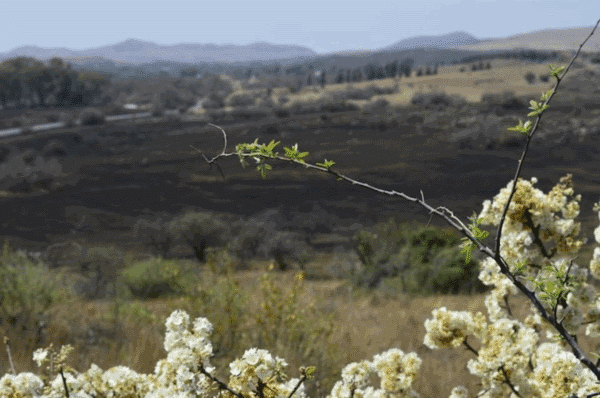
Cradle of Humankind — No visit to Johannesburg or South Africa in general, would be complete without a trip to the birthplace of humanity: The Cradle of Humankind. Located less than an hour outside Johannesburg, see many important archeological discoveries pertaining to the origins of Homo sapiens. 27 (0)14 577 9000; www.maropeng.co.za
Victory Theatre — Experience South African culture through the art of performance at the Victory Theatre. Here patrons enjoy a delicious buffet of traditional foods before seeing “Umoja” — which means “the spirit of togetherness” — a high-energy showcase of traditional and modern song and dance that tells the story of South Africa. 27 (0)11 728 9603; www.victorytheatre.co.za
Bill Harrop’s “Original” Balloon Safaris — Head less than an hour outside of Johannesburg to experience the flora and fauna of the MagaliesRiverValley and the Cradle of Humankind from a hot air balloon. Keep your eyes peeled for exotic animals like giraffe, zebra and sable antelope. 011 705 3201; www.balloon.co.za/Balloon/
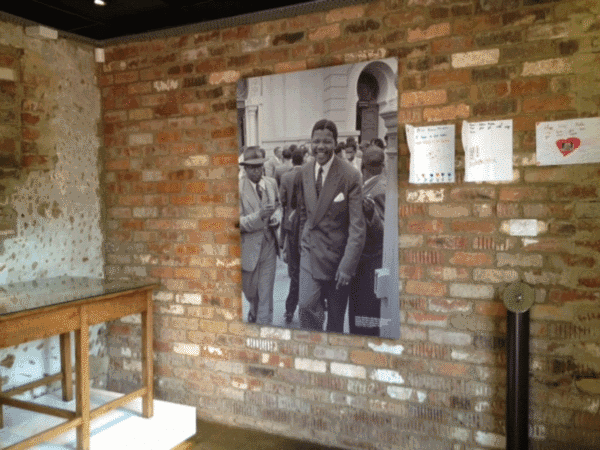
Lilliesleaf – This immersive museum experience allows you to explore the farm where Africa National Committee leaders like Nelson Mandela, Walter Sisulu, Raymond Mhlaba and Lionel Bernstein had their headquarters and were eventually arrested on July 11, 1963. Tour the rooms and see interactive exhibits, video clips, photographs, interviews and artifacts that give insight into apartheid, how it affected people and how it was eventually dismantled. 07 George Avenue, Rivonia, +27 11 803 7882/3/4; www.liliesleaf.co.za
Where to Learn More:
www.southafrica.net/country/us/en
[/alert]

